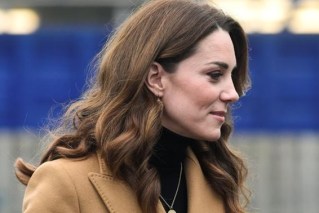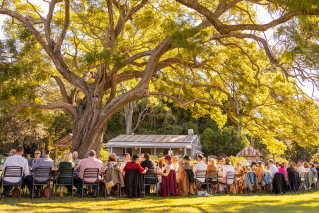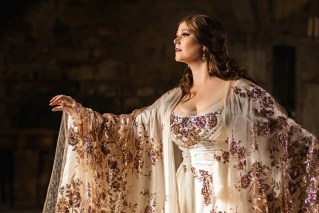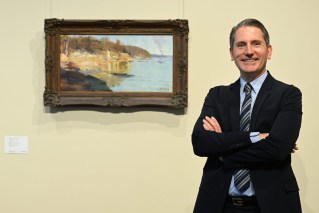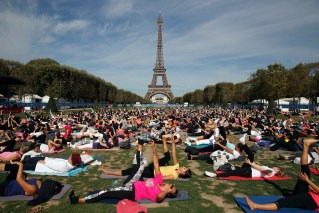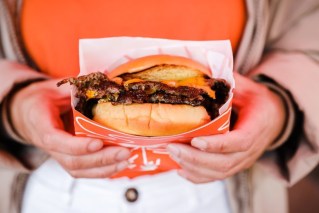Bushfire exhibition rekindles burning questions from a year ago
A year on from the devastating Black Summer bushfire season, Brisbane’s Institute of Modern Art is unveiling an exhibition that reflects on the fragility of our environment and threats posed by rising global temperatures.

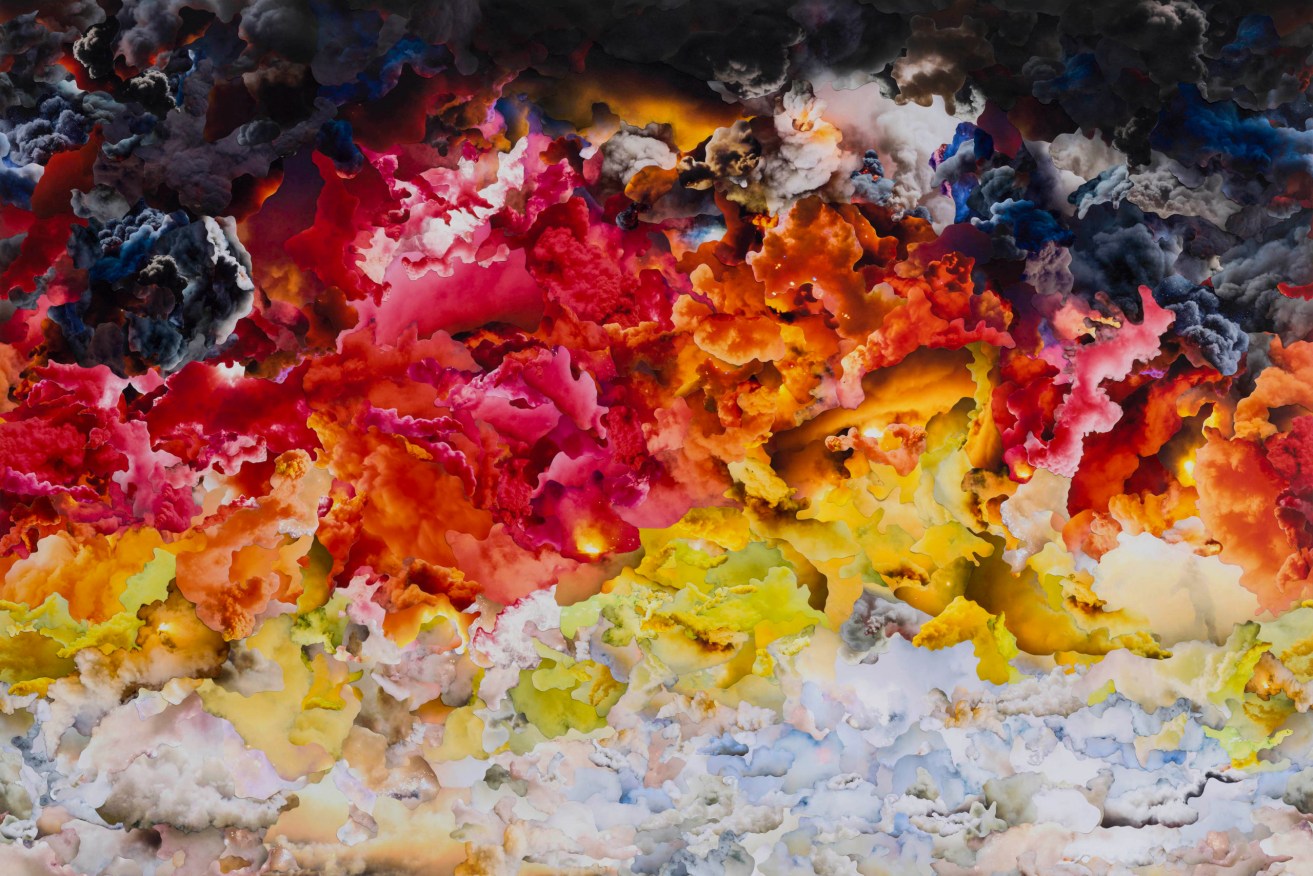
Jemima Wyman's Haze, which is comprised of several pieces that form a collage on a large-scale chiffon curtain. (Photo: Supplied)
On Fire: Climate and Crisis, which opens at the IMA’s Fortitude Valley gallery on Saturday, features work from 15 Queensland artists and challenges the state’s image as a subtropical paradise by considering the themes of global warming and climate threat.
Exhibition curator and art historian Tim Riley Walsh said the exhibition had its genesis in late 2019, at the start of what came to be known as the Black Summer bushfire season.
“It was really as a response to what was the beginning of the Black Summer bushfires,” Riley Walsh told InQueensland. “Of course, bushfire smoke is not something that is unusual in Australia but there was something palpably pronounced about the situation that was developing.
“Seeing those scenes further down south in Sydney of the sun being turned a tinge of orange and those images from [Victorian town] Mallacoota triggered a reaction in me – as it perhaps did in others – that this wasn’t sort of a typical situation, this was at a scale that was unusual.
“I was already in conversation with the IMA at that time about an exhibition about an exhibition that’s focused on contemporary Queensland art and about what I thought an appropriate theme would be.”
On Fire spans multiple disciplines, from painting and sculpture to immersive installation and video and includes eight new commissions, in an exploration of the past, present and future of what Riley Walsh has described as the planet’s precarious environmental situation.
Riley Walsh acknowledged last summer’s fires took a greater toll on states such as NSW and Victoria but said this exhibition also served as a reminder that Queensland didn’t escape unscathed, either.
“Queensland was certainly affected to a lesser extent, but there were images such as the burning in Lamington Park near Binna Burra that I personally found particularly confronting, especially the proximity to rainforest environments, which as the name might suggest, are not environments that should burn naturally.”
Artists featured in the exhibition are Gordon Bennett, Naomi Blacklock, Paul Bong, Hannah Brontë, Michael Candy, Kinly Grey, Dale Harding, Tracey Moffatt with Gary Hillberg, Erika Scott, Madonna Staunton, Anne Wallace, Judy Watson, Warraba Weatherall, Tintin Wulia and Jemima Wyman.

Anne Wallace’s oil on linen work Fire in the Hills.
Works from several First Nations artists – including Bronte, Bong, Harding and the late Bennett – are among those featured in On Fire and Riley Walsh said ensuring Indigenous artists’ voices were heard was one of his primary considerations when planning the exhibition.
“It’s critical that First Nations voices are essential to a show such as this and that was something that was very clear from the beginning.
“It was always going to be about making sure that we were foregrounding First Nations voices in the exhibition, and really representing the incredible talent and diversity of Queensland’s art scene as well.
“From a European understanding, fire is something which is seen as a danger in the landscape that should be suppressed, but if we’re thinking about an Indigenous Australian perspective, fire has a very critical and crucial role within the environment of rejuvenating and cleaning the land.”

Gordon Bennett’s 1991 work Fire (Relative, Absolute). (Photo: Supplied)
One of the most striking works that features in the exhibition is Jemima Wyman’s Haze, a large-scale digital collage printed on chiffon that collects and collates images of smoke from a series of recent global protests.
The powerful tapestry showcases activist struggles including plumes from flares released during Black Lives Matter rallies across the US, tear gas clouds released at pro-democracy demonstrations in Hong Kong and ceremonial smoke following the destruction of Western Australia’s Juukan Gorge by Rio Tinto last year.
Wyman, who splits her time between Brisbane and the US and is currently based in Los Angeles, has been directly affected by the impact of bushfires in both countries.
“My studio, which is close to downtown Los Angeles, filled with the smell of smoke from the Bobcat fire while I was arranging cut-out smoke pieces,” she told InQueensland.
“The pieces form a collage that is the image for Haze, a large-scale chiffon curtain. The curtain work developed out of a previous collage work, Plume, that I had made around the use of smoke in protest.
“At the time I was thinking about how protesters from around the world often use ‘yellow and black’ to cover their bodies and faces for ‘protection’ while in public. This palette is used in animal camouflage [aposematism] also to ward off predators and as an indicator of toxicity. It operates like a hazard sign, a warning of the impending future danger of interacting with the animal under prey.
“Plume was teasing these ideas out, while also thinking about the etymology of the word ‘camouflage’. The word develops from a French word camouflet ‘whiff of smoke in the face’. Smoke conceals and warns of danger. There is some correlation between the etymology of the ‘word’ and the experience of monitoring the recent bushfires in Australia and California.”
Wyman encouraged Brisbane residents to get along and see On Fire, describing the exhibition as “a breath of fresh air on the topic of climate change”.
“Walking through this exhibition space will engage all your senses on the issue of climate change and art; this in my opinion is the best way to contemplate key current and future issues facing our community,” she said.
It was a sentiment echoed by Riley Walsh, who said he hoped the exhibition would help ensure last summer’s
“Even though Black Summer is perhaps drifting out on the edges of people’s memories for those that didn’t directly experience it, I hope [On Fire] serves as an important reminder that this is a very critical situation that we find ourselves in, both in Australia and globally,” he said.
“Global warming isn’t going away, it’s only growing more complex and I hope that we can recognise arts has an important role to play in helping people to comprehend and make sense of the seriousness of this issue.”
On Fire: Climate and Crisis will be on display at the Brisbane Institute of Modern Art, Fortitude Valley, from January 30 unto, February 20.
For more details, visit the IMA website


